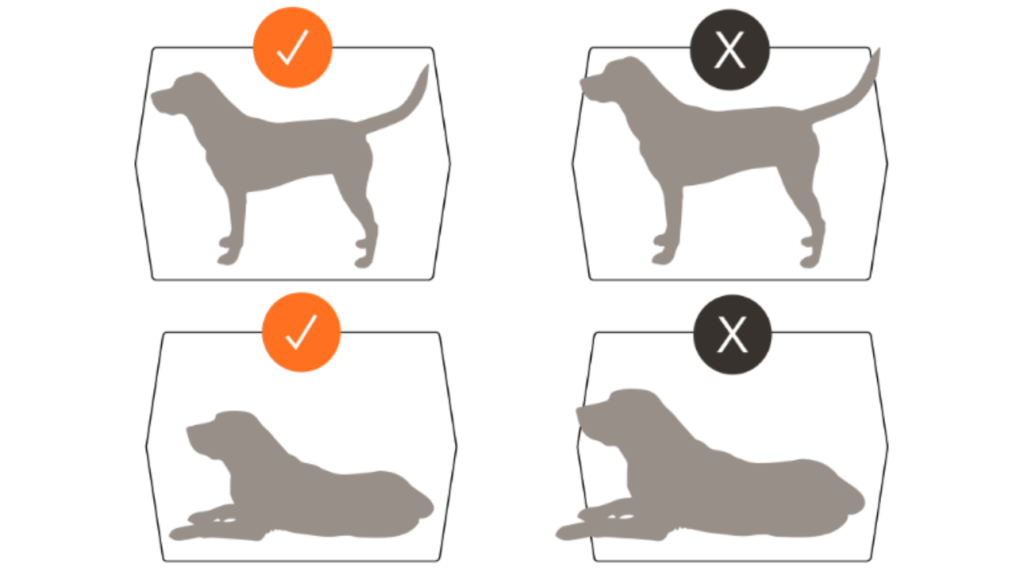Traveling by plane with a pet can seem like a big challenge, but with the right planning, the experience can be smooth for both the animal and the owner.
Many people choose to bring their pets on air travel, whether for vacations, relocations, or even for a veterinary appointment in another city.
However, it is essential to know the rules and necessary precautions to ensure your furry friend has a safe and comfortable journey.
In this article, we will share essential information on how to travel by plane with your pet, covering everything from choosing the right transportation to post-flight care.
If you are planning to travel with your pet, keep reading to learn the best practices, avoid unexpected situations, and ensure that the journey is as enjoyable as the destination.
1. Airline Rules

Before traveling by plane with a pet, it’s crucial to know the specific rules of the airline you will be flying with. Each airline has its own policies regarding pet transportation, and the requirements can vary depending on the size of the pet, the destination, and the type of flight.
The first step is to check if the airline allows pets on board and what their limitations are.
Usually, for smaller pets, they are allowed to travel in the cabin with the owner, as long as the pet and carrier do not exceed the specified weight and dimension limits.
Larger animals typically need to be transported in the cargo hold, which is pressurized and climate-controlled, but still a different environment from what we are used to.
Additionally, each airline charges different fees, which may vary based on the pet’s size, the flight duration, or even the international destination.
Therefore, it’s a good idea to contact the airline in advance to clarify all requirements, including documentation, vaccinations, and carrier selection.
2. Required Documentation
Traveling by plane with a pet requires more than just booking a ticket. To ensure the trip goes smoothly, it’s essential to prepare all the necessary documentation, which may vary depending on the destination and airline.
Most airlines require a health certificate from a veterinarian, confirming that the pet is fit to travel and free of contagious diseases.
Also, make sure your pet’s vaccinations are up to date, especially those required for international travel, such as rabies. For destinations outside the country, the pet may need a passport or an international health certificate, depending on the destination country’s requirements.
Ensure your pet also has a microchip or visible identification, which makes it easier to locate the animal if something happens during the flight.
Having all the documentation organized and on hand in advance is a crucial step in ensuring a smooth and trouble-free journey.
3. Choosing the Right Type of Transport
Choosing the right type of transport for your pet is one of the most important decisions when planning to travel by plane with a pet.
For smaller animals, many airlines allow them to travel in the cabin with the owner, which can be a more comfortable option, as the pet will be close by and monitored during the flight.
However, the carriers used for cabin pets have size and weight limits, so it’s essential to measure and weigh the carrier before the trip to ensure the pet fits within the airline’s specifications.
For larger dogs and cats that can’t fit in the cabin, they will be transported in the cargo hold, where temperature and pressure are controlled, but the environment may be more stressful for the animal.
In this case, choosing an appropriate and safe carrier is essential. It should be sturdy, well-ventilated, and large enough for the animal to move comfortably.
Remember to label the carrier with contact information and identification, and ensure the pet has a small amount of water during the flight to keep them as comfortable as possible.
4. Preparing Your Pet for the Trip

Preparing your pet for the journey is essential to ensure they feel comfortable and secure throughout the process. One of the best ways to do this is to get the animal used to the carrier before the flight.
Place them inside the carrier a few days before the trip, allowing them to explore and associating the carrier with something positive, like toys or treats. This will help reduce stress as the pet becomes familiar with the space and realizes it’s not a scary place.
Additionally, it’s important to ensure your pet is in good physical and emotional condition before traveling. Take them to the vet for a general check-up and to ensure they are healthy enough for the trip, especially if it’s a long flight.
If your pet has a history of anxiety, discuss potential solutions with your vet, such as medications or calming pheromones, which can help reduce stress during the flight.
Remember, careful preparation can make the experience much more pleasant for your furry friend.
5. Visit to the Veterinarian
Before traveling by plane with a pet, a visit to the veterinarian is crucial to ensure that your pet is in good health for the trip.
The veterinarian will perform a general check-up on the animal, checking that it is free of diseases and has updated vaccinations, especially those required for international travel, such as the rabies vaccine.
If the pet has any pre-existing health conditions, the veterinarian may provide specific recommendations to avoid complications during the flight.
Additionally, it is important to discuss with the veterinarian the options for sedation, if your pet tends to become anxious or stressed during travel.
However, many professionals recommend avoiding sedatives, as they can interfere with the animal’s ability to adjust to the pressure changes during the flight.
Ensure that your pet is fit to travel in terms of health and behavior, and don’t hesitate to ask for advice on how to handle the journey in the best possible way.
A consultation with the veterinarian not only ensures your pet’s well-being but also provides peace of mind for the owner during the trip, especially when traveling by plane with a pet.
6. Consultation with the Veterinarian About Medications
Before traveling by plane with a pet, it is important to consult with the veterinarian about the use of medications or supplements that may help your pet cope with the trip.
Some animals, particularly those prone to anxiety or stress, may benefit from treatments that reduce nervousness during the flight.
The veterinarian may recommend specific medications, such as mild tranquilizers or natural supplements, to help calm your pet without causing adverse effects.
However, not all animals respond well to sedatives, and many veterinarians discourage the use of heavy medications for animals during flights, as changes in pressure and inactivity can affect the animal’s body in unpredictable ways.
Moreover, if your pet is elderly or has any health issues, it is essential to discuss these options with the veterinarian to ensure it is fit for any medication.
The consultation may also include recommendations for more natural alternatives, such as pheromones, to make the experience of traveling by plane with a pet as comfortable as possible.
7. Pet Identification
Ensuring that your pet is properly identified is critical when traveling by plane with a pet. Proper identification helps locate your pet quickly in case it gets lost or if any issues arise during the flight.
The first step is to make sure the animal has a visible ID tag on its carrier or collar, with the owner’s name, phone number, and, if possible, address.
This makes communication easier if there are any unexpected situations during boarding or upon arrival at the destination.
In addition to tags, it is highly recommended that your pet has a microchip. The microchip is a small, secure device inserted under the animal’s skin, containing identification information that can be scanned at airports or other locations.
This greatly increases the chances of recovering the animal if it gets lost. The combination of a good ID tag and a microchip ensures your pet has two forms of identification, providing greater security and peace of mind for the owner when traveling by plane with a pet.
Consider also bringing along soothing aids like toys and accessories that will help your pet feel more comfortable and secure during the flight, making traveling by plane with a pet a smoother experience.
8. Feeding and Hydration

Keeping your pet well-fed and hydrated during the journey is essential to ensure its comfort and well-being. However, it’s important to know what and when to feed your pet before the flight.
Avoid giving a heavy meal right before traveling by plane with a pet, as it may cause nausea or discomfort during the flight.
It’s advisable to feed your pet a light meal a few hours before boarding to prevent any upset stomach.
Hydration is also crucial, especially on long flights or to destinations with hotter climates. Bring a water bottle and a small bowl to offer your pet during the trip, if necessary.
For pets traveling in the cabin, it is easier to maintain hydration, as you can offer water directly to your pet, but for animals in the cargo hold, some airlines provide water systems inside the carrier.
Ensure that your pet has sufficient access to water during the trip to prevent dehydration, which can be harmful, especially on long-haul flights. Traveling by plane with a pet requires extra care in this area to ensure your pet’s health and comfort throughout the journey.
9. Feeding and Hydration
Keeping your pet well-fed and hydrated during the journey is essential to ensure its comfort and well-being. However, it’s important to know what and when to feed your pet before the flight. Avoid giving a heavy meal right before traveling, as this can cause nausea or discomfort during the flight.
It is recommended to feed your pet a light meal a few hours before boarding to prevent any discomfort.
Hydration is also crucial, especially on long flights or to destinations with warmer climates. Bring a water bottle and a small bowl to offer your pet during the trip, in case it needs it.
For pets traveling in the cabin, it’s easier to keep them hydrated because you can offer water directly. However, for pets in the cargo hold, some airlines have water supply systems inside the carrier.
Make sure your pet has enough access to water during the journey to prevent dehydration, which can be harmful, especially on long flights.
Traveling by plane with a pet requires extra attention to these details to ensure their comfort throughout the journey.
10. Pet Care During the Flight
During the flight, especially on long journeys, it is vital to ensure your pet is as comfortable as possible. Although most airlines provide safe conditions for transporting animals, the experience can be stressful for them.
If your pet is traveling in the cabin, you will have the advantage of being able to monitor it closely, offering extra comfort like treats, toys, and even brief interactions during the flight to calm it down.
Additionally, make sure your pet has access to water and that the carrier is well-ventilated.
For pets traveling in the cargo hold, the care required demands a little more attention, as you won’t have access to your pet during the flight.
In this case, talk to the airline about the possibility of checking your pet’s well-being during the trip.
Some companies offer monitoring services and updates on your pet’s status during the flight, which can help alleviate your anxiety about Traveling by plane with a pet.
Additionally, make sure the carrier is sturdy and has enough space for your pet to move around a little, preventing it from feeling excessively confined during transportation.
11. Arrival at the Destination
Upon arrival at the destination, it’s important to proceed with calm and care when removing your pet from the carrier. If your pet traveled in the cargo hold, it may be a bit disoriented or anxious due to the time without interaction.
Ensure you have a quiet and safe area to take your pet out, away from the intense movement at the airport.
If you’re traveling internationally, you will need to go through immigration control and veterinary inspection, where your pet will be checked to ensure all documents and vaccinations comply with the destination country’s requirements.
After this process, make sure your pet is comfortable and has immediate access to water and food, if necessary. Remember that your pet may be tired or stressed after the long journey, so take some time to give it attention and reassurance.
Traveling by plane with a pet can be a challenging experience for both you and your pet, so this will help re-establish the connection between you and ensure your pet adjusts more quickly to the new environment.
12. Post-Flight Care
After the flight, it is essential to continue caring for your pet’s well-being to ensure it recovers from the travel stress and adapts to the new environment.
The first step is to give your pet some time to calm down and rest. Avoid intense activities immediately after arrival, as the flight can be exhausting, and your pet will need some time to relax.
Additionally, closely observe your pet’s behavior in the first few hours after the flight. Watch for signs of stress, such as lethargy, loss of appetite, or difficulty breathing, which could indicate discomfort or that something isn’t right.
If you notice any unusual symptoms, seek advice from a veterinarian. Remember to offer plenty of water and light food, as well as provide a safe and quiet place for your pet to rest.
This recovery time will help your pet adjust to the new destination and overcome any impact from the journey, especially if you are Traveling by plane with a pet.
13. Climate and Environment Care
The climate and environment at the final destination can also directly influence your pet’s well-being after the flight.
Changes in temperature, humidity, or even the type of soil can affect your pet, especially if it isn’t used to these conditions.
In warmer destinations or places with a climate different from usual, always take extra care to ensure your pet is comfortable, with access to shade and fresh water.
If you’ve traveled to an environment with extreme climates, such as very high or low temperatures, try to adapt your pet’s routine to the new climatic factors, avoiding walks during peak heat or cold hours.
Additionally, some pets may need time to get used to the new smells or sounds of the surrounding environment. Ensure your pet has a safe and quiet space to rest and feel at ease, so it can adjust to the new surroundings more quickly.
14. Post-Travel Veterinary Follow-Up
After a flight, it is always a good idea to have a veterinary follow-up for your pet, especially if the flight was long or the animal underwent significant stress.
The veterinarian can evaluate whether there was any negative impact from the trip, such as respiratory or digestive discomfort, and ensure that your pet is fully healthy after the flight.
Furthermore, if your pet will be traveling frequently, regular veterinary check-ups may be necessary to monitor its health and ensure it is fit for future trips.
If you plan on Traveling by plane with a pet regularly, this step is important to ensure your pet’s ongoing health.
The veterinarian can also offer tips on how to help your pet recover from the travel stress and ensure it stays well on future journeys.
